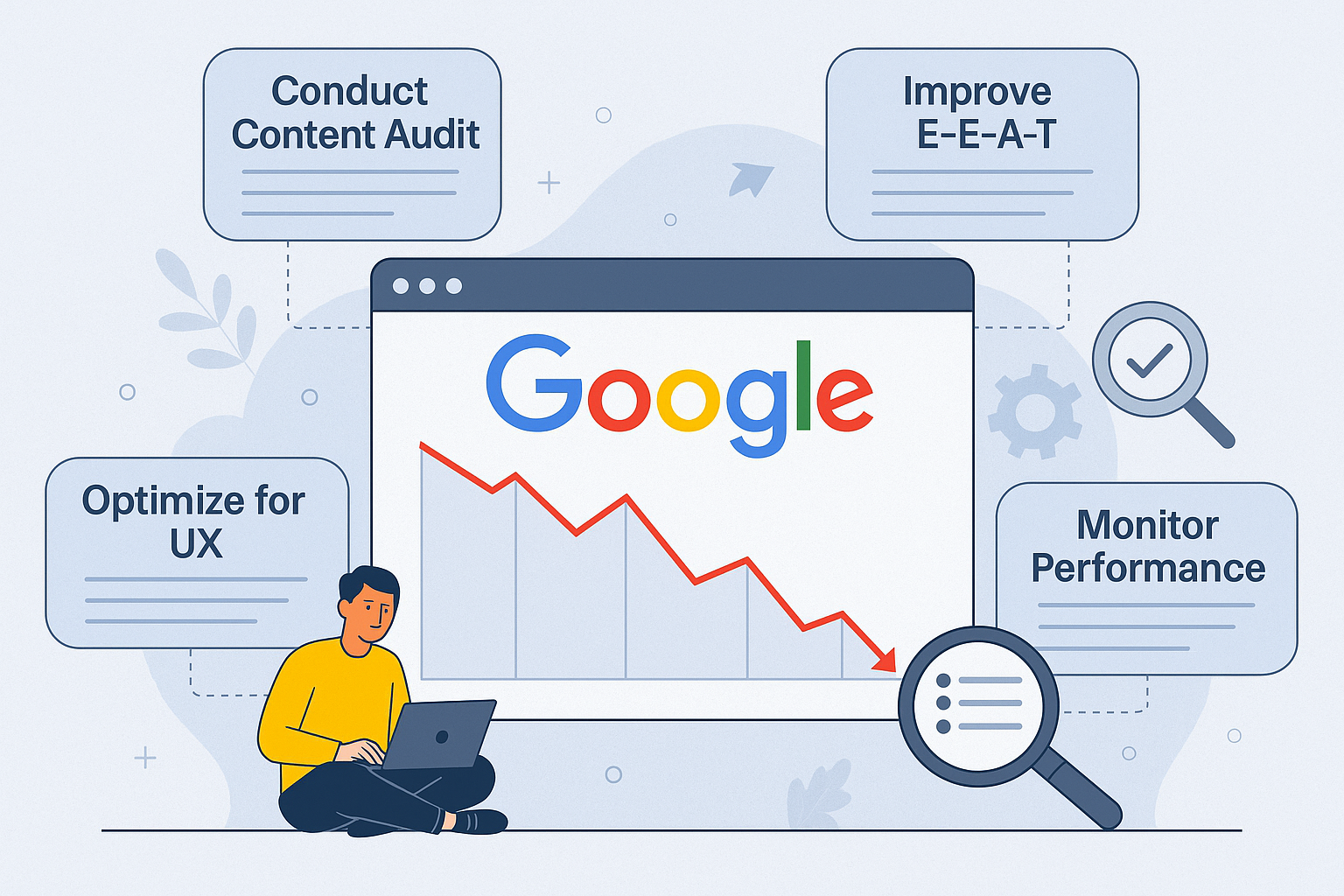In the ever-evolving digital landscape, understanding how to recover from Google algorithm updates is essential for every website owner, marketer, and SEO professional. A single algorithm change can cause significant shifts in search rankings, traffic, and ultimately, revenue. These updates are designed to improve user experience and reward high-quality content, but they can also disrupt long-standing SEO strategies overnight.
Over the years, thousands of businesses—both small and large—have experienced sudden drops in their organic rankings due to core updates, spam filters, or product review guidelines. Recovering from these shifts requires more than just technical fixes; it demands a comprehensive SEO recalibration.
Key Topics Covered
- Understanding the impact of algorithm updates
- Identifying if your site was affected
- Real-world examples of penalties and recoveries
- Step-by-step recovery strategies
- Tools and techniques to future-proof your SEO
Understanding Google Algorithm Updates
Google algorithm updates are adjustments made to how search results are ranked. These changes may be broad, targeting core signals like content relevance and authority, or specific, focusing on spam, product reviews, or link quality.
Types of Updates
- Core Updates – Focus on overall content quality, E-E-A-T (Experience, Expertise, Authoritativeness, Trustworthiness)
- Spam Updates – Target low-quality, manipulative content or links
- Product Review Updates – Prioritize expert, in-depth, and original product reviews
- Helpful Content Updates – Designed to reward people-first, value-driven content
Example: In the August 2023 Core Update, many affiliate marketing websites experienced ranking drops due to over-optimized pages and lack of original insight.
How to Identify If You Were Affected
Before diving into recovery, it’s crucial to determine whether your traffic loss is actually due to a Google algorithm update.
Check These Indicators:
- Sudden Drop in Organic Traffic – Use Google Analytics and Google Search Console.
- Keyword Position Shifts – Track ranking fluctuations using tools like SEMrush or Ahrefs.
- Crawl Errors or Manual Actions – Examine your Search Console for notifications.
- Compare with Industry Trends – Visit forums like WebmasterWorld or follow updates on Search Engine Journal.
Step-by-Step Guide: How to Recover from Google Algorithm Updates
Once you’ve confirmed an update hit, implement the following structured recovery plan:
- Conduct a Comprehensive Content Audit
- Identify low-performing, outdated, or thin content.
- Evaluate for originality, depth, accuracy, and user intent.
- Merge or remove overlapping articles that cannibalize rankings.
- Improve E-E-A-T Signals
- Google favors websites that demonstrate real-world experience, expertise, and authority.
- Add author bios with qualifications.
- Include references, external links, and source citations.
- Secure backlinks from niche-relevant and trustworthy sources.
- Optimize for User Experience (UX)
- Ensure fast page load times
- Fix mobile usability issues
- Improve internal linking and navigation structure
- Remove or Disavow Toxic Backlinks
- Use tools like Moz Link Explorer or Google’s Disavow Tool
- Focus on building high-quality editorial links instead
- Revise Meta Tags and On-Page SEO
- Recheck title tags, meta descriptions, and H1 usage
- Optimize for intent-driven keywords, not just exact matches
- Update Product Reviews or Service Pages (if applicable)
- Add personal experience, unique data, or comparison tables
- Include multimedia like images or video demonstrations
Real-World Example: Content Recovery After a Core Update
A Canadian e-commerce site lost 40% of its organic traffic after the May 2022 Core Update. A thorough audit revealed:
- Outdated blog content
- Weak internal links
- Overuse of exact-match keywords
Recovery Actions Taken:
- Updated 60 percent of content with new insights and expert citations
- Rebalanced keyword density and optimized for search intent
- Improved mobile UX and reduced bounce rate by 15 percent
Result: 30% traffic recovery within 3 months, with some keywords regaining top 5 rankings.
Tools to Aid Recovery
- Google Search Console – Monitor performance and technical errors
- SEMrush / Ahrefs – Conduct keyword tracking and backlink analysis
- Screaming Frog – Crawl websites for SEO issues
- Surfer SEO / Clearscope – Optimize content quality based on SERP analysis
- PageSpeed Insights – Improve site speed and user experience
Prevent Future Penalties: Proactive SEO Strategies
- Focus on long-form, high-value content that satisfies user intent
- Publish original research, opinion pieces, or data-driven articles
- Regularly update old content to keep it fresh
- Use structured data to enhance search visibility
- Maintain a transparent privacy policy and contact information
Recovering from a Google algorithm update is not about chasing ranking signals—it’s about consistently delivering value to users. By focusing on quality, trustworthiness, technical health, and strategic SEO alignment, businesses can not only recover but also thrive after algorithm changes.
Whether you’re a digital agency, content publisher, or in-house SEO team, mastering how to recover from Google algorithm updates is essential for long-term online success.
